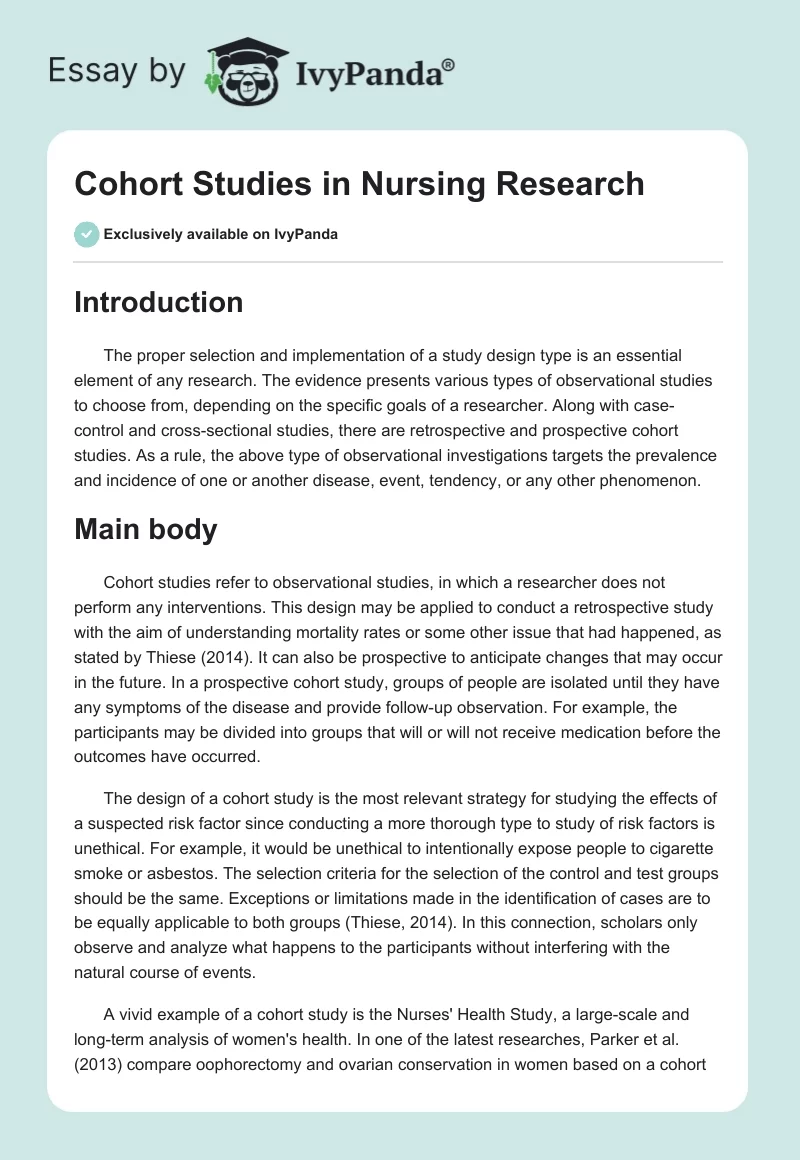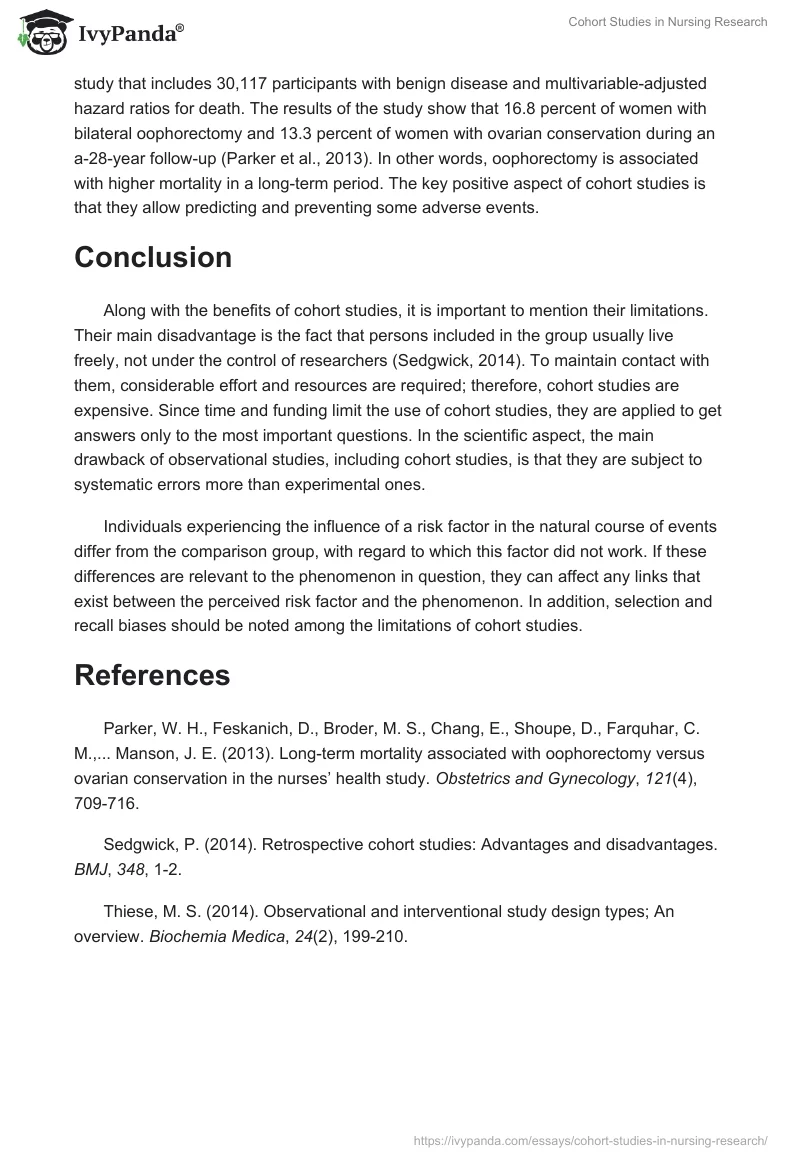Introduction
The proper selection and implementation of a study design type is an essential element of any research. The evidence presents various types of observational studies to choose from, depending on the specific goals of a researcher. Along with case-control and cross-sectional studies, there are retrospective and prospective cohort studies. As a rule, the above type of observational investigations targets the prevalence and incidence of one or another disease, event, tendency, or any other phenomenon.
Main body
Cohort studies refer to observational studies, in which a researcher does not perform any interventions. This design may be applied to conduct a retrospective study with the aim of understanding mortality rates or some other issue that had happened, as stated by Thiese (2014). It can also be prospective to anticipate changes that may occur in the future. In a prospective cohort study, groups of people are isolated until they have any symptoms of the disease and provide follow-up observation. For example, the participants may be divided into groups that will or will not receive medication before the outcomes have occurred.
The design of a cohort study is the most relevant strategy for studying the effects of a suspected risk factor since conducting a more thorough type to study of risk factors is unethical. For example, it would be unethical to intentionally expose people to cigarette smoke or asbestos. The selection criteria for the selection of the control and test groups should be the same. Exceptions or limitations made in the identification of cases are to be equally applicable to both groups (Thiese, 2014). In this connection, scholars only observe and analyze what happens to the participants without interfering with the natural course of events.
A vivid example of a cohort study is the Nurses’ Health Study, a large-scale and long-term analysis of women’s health. In one of the latest researches, Parker et al. (2013) compare oophorectomy and ovarian conservation in women based on a cohort study that includes 30,117 participants with benign disease and multivariable-adjusted hazard ratios for death. The results of the study show that 16.8 percent of women with bilateral oophorectomy and 13.3 percent of women with ovarian conservation during an a-28-year follow-up (Parker et al., 2013). In other words, oophorectomy is associated with higher mortality in a long-term period. The key positive aspect of cohort studies is that they allow predicting and preventing some adverse events.
Conclusion
Along with the benefits of cohort studies, it is important to mention their limitations. Their main disadvantage is the fact that persons included in the group usually live freely, not under the control of researchers (Sedgwick, 2014). To maintain contact with them, considerable effort and resources are required; therefore, cohort studies are expensive. Since time and funding limit the use of cohort studies, they are applied to get answers only to the most important questions. In the scientific aspect, the main drawback of observational studies, including cohort studies, is that they are subject to systematic errors more than experimental ones.
Individuals experiencing the influence of a risk factor in the natural course of events differ from the comparison group, with regard to which this factor did not work. If these differences are relevant to the phenomenon in question, they can affect any links that exist between the perceived risk factor and the phenomenon. In addition, selection and recall biases should be noted among the limitations of cohort studies.
References
Parker, W. H., Feskanich, D., Broder, M. S., Chang, E., Shoupe, D., Farquhar, C. M.,… Manson, J. E. (2013). Long-term mortality associated with oophorectomy versus ovarian conservation in the nurses’ health study. Obstetrics and Gynecology, 121(4), 709-716.
Sedgwick, P. (2014). Retrospective cohort studies: Advantages and disadvantages. BMJ, 348, 1-2.
Thiese, M. S. (2014). Observational and interventional study design types; An overview. Biochemia Medica, 24(2), 199-210.


